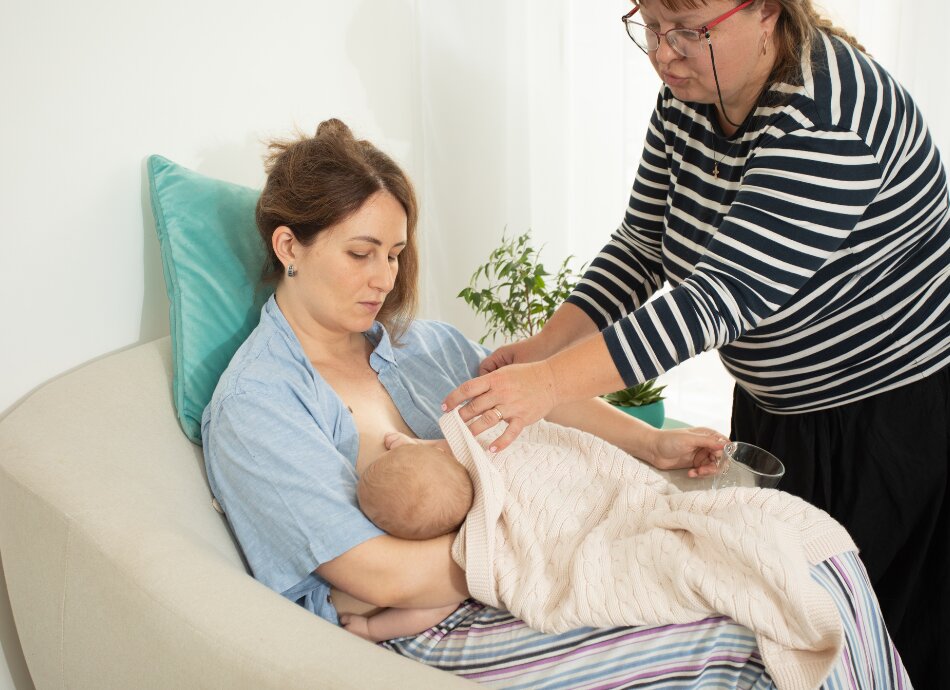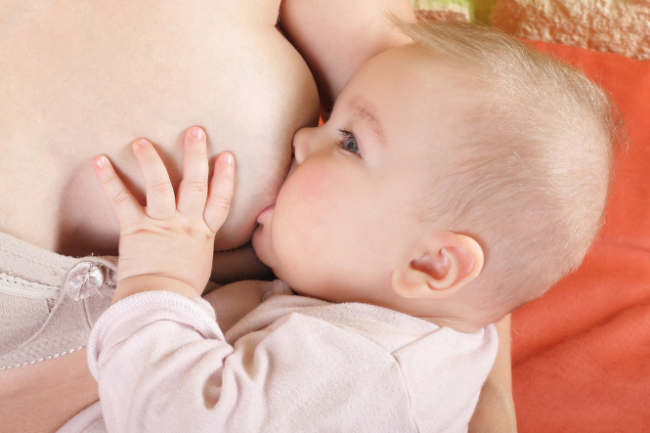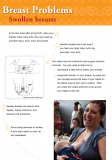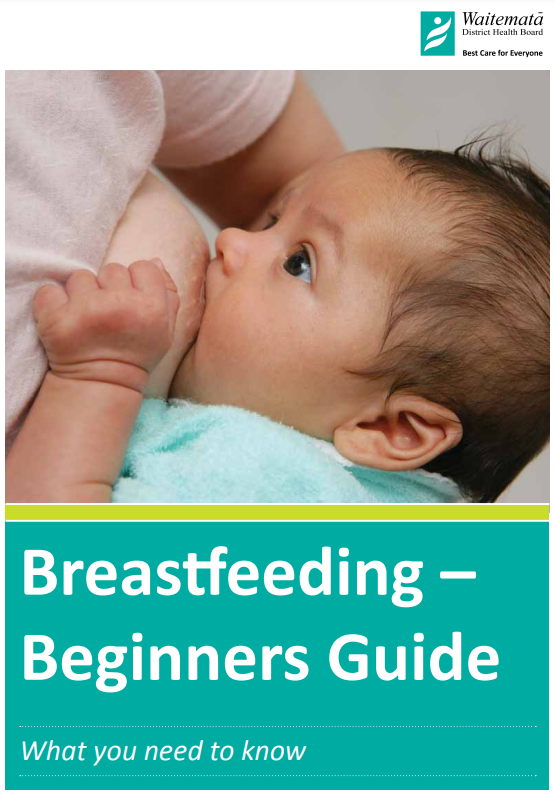A few days after the birth, your milk supply comes in. For some people this happens very quickly, often overnight, and your breasts may become swollen, hard, hot and painful. This usually lasts less than 24 hours.
What can you do about engorged breasts?
Feeding your baby frequently on demand can help relieve the discomfort of engorged breasts. It's usual to feed at least 10 times over 24 hours at this stage. Don't try to space feeds or limit your baby's time at the breast.
If your baby has difficulty latching on because your breasts are so engorged, try expressing a little excess milk by hand to relieve a little pressure.
Read more and watch a video about hand expressing milk.(external link)
A technique called ‘reverse pressure softening’ can also help. This involves applying gentle but firm pressure on either side of the areola (the ring of coloured skin around the nipple) using the finger and thumb and pressing towards the chest wall. Keep the pressure constant for up to 60 seconds – the swelling will feel like it is shifting backwards, making it easier for baby to latch on.
Cool compresses for 20 minutes after or between feeds can provide relief.
Cabbage leaves are an old fashioned remedy for engorgement. Care must be taken as cabbage leaves can reduce milk production. Apply clean cooled green cabbage leaves for up to 20 minutes a maximum of 3 times per day. Once symptoms or engorgement have improved, you should stop using cabbage leaves.
Avoid
- Applying heat.
- Massaging or stimulating the breast.
Red flags
Contact your doctor or lead maternity carer (LMC) immediately if:
- you have a fever, or feel shivery/significantly unwell
- your breast is red and tender
- your baby isn’t feeding well or is sleepy
- you have concerns regarding your baby or yourself
- symptoms or engorgement are not improving after 24 hours.









